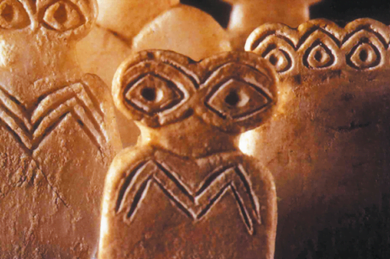Among the many tragedies suffered by the people of Syria, one that has so far gone largely unnoticed is the plundering of Syria’s cultural heritage by criminals seeking to make a quick buck on the black market. Syria is one of the seeds of western civilization and ancient artifacts that detail the rich life, arts, economy, religion and politics of ancient Syria are being stolen, looted and exported for profit around the world.
In a recent briefing with reporters, UNESCO’s director general Irina Bokova detailed her organization’s work to protect Syrian antiquities and objects cultural heritage.
Her top concern are illicit archeological excavations that have popped up throughout Syria in which people are using archeological digs as an opportunity for looting. “We don’t know what is happening there. Anyone can do this,” says Bokova. “This is something that is not very high on the radar of the international community.”
Items are being excavated by amateurs and exported throughout the world by organized criminal groups. “You can go to markets in Beirut and see antiquities from Syria,” says Bokova.
UNESCO is working with partners around the world to help stem the black market sale of stolen Syrian cultural artifacts. In September, UNESCO released an Emergency Red List of Syrian Cultural Objects at Risk that is being used by law enforcement, art professionals, auction houses and museums to help identify the types of objects that are most likely to be traded on the black market at the expense of the Syrian people.
If objects of cultural heritage are determined to have been stolen from a country during conflict, UNESCO will often work with museums and authorities to provide safe keeping for the artifacts until the conflict subsides and the artifacts can be safely repatriated.
Here are some examples from the red list of what UNESCO believes are artifacts most vulnerable to looting.


Alabaster “Eye Idols” dating from Prehistory to Islamic era (6th millennium BC – 15th century AD)


Limestone Funery Bust dating from Prehistory to Islamic era (6th millennium BC – 15th century AD)




Silver tetradrachm with Mark Antony and Cleopatra VII, dating from Achaemenid to Ottoman period (539 BC – AD 1918)
The looting of cultural heritage is an ugly byproduct of the breakdown of law an order. It is yet another that has been perpetrated against the Syrian people during the last 33 months of conflict.
